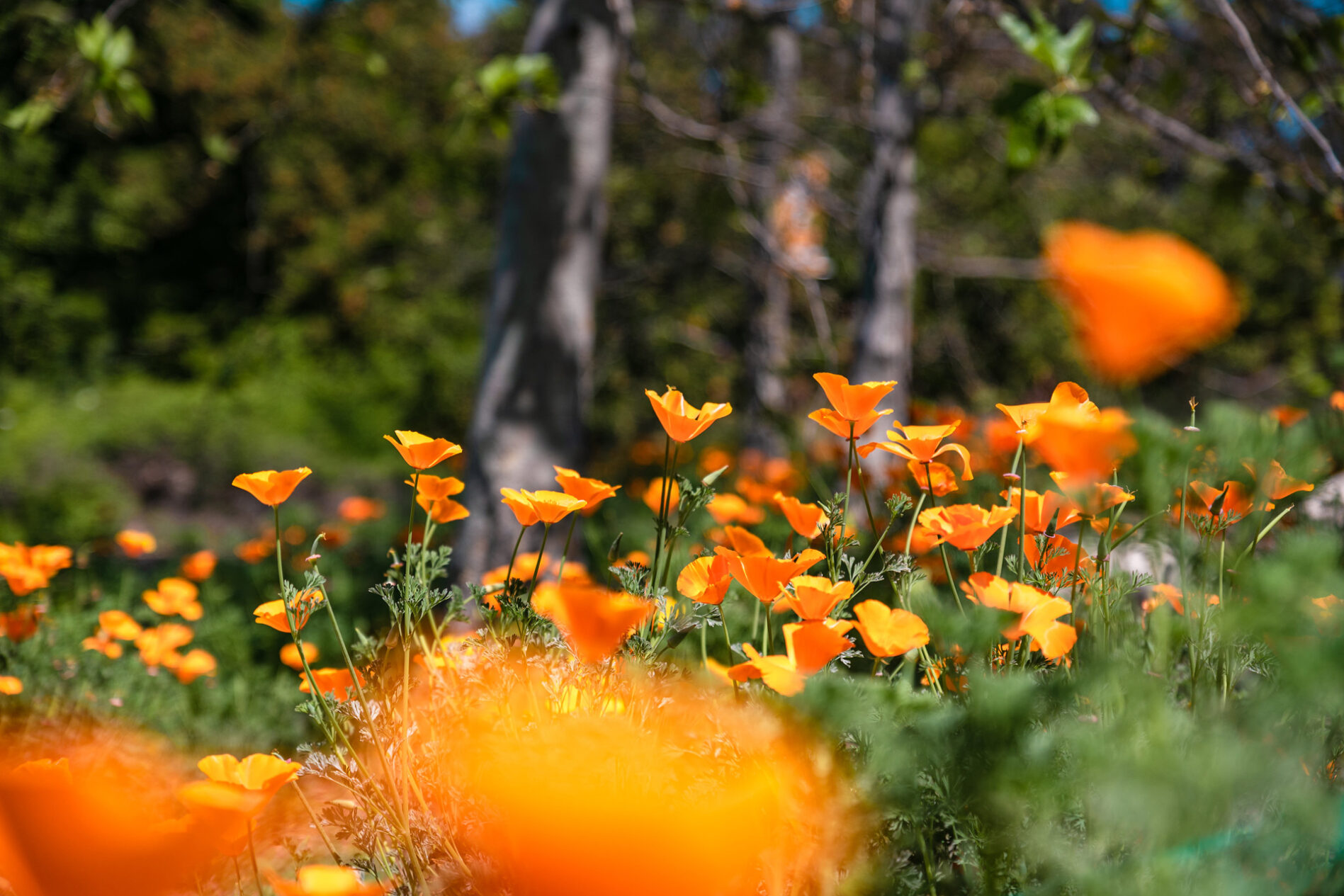Southern California winter months are the ideal time to install native and climate-appropriate non-native plants into your landscape.
In Southern California, it rains in late fall, winter and spring with almost no rain in the summer. Rainfall in December is around 1.75 – 2” increasing to 2.75” in January and then begins to decrease after April. Now is the best time to get plants in the ground ahead of, and during, the early part of the season to give them a chance to use the cooler weather and rain to begin developing deep root systems, and become established.
So, what plants should you plant?
To conserve water and support the best choices for our climate, we suggest “very low” and “low” water use plants. Native and climate-appropriate plants have evolved to follow our typical seasonal rain pattern! This eliminates the need for wasteful, excessive watering. Native and climate-appropriate plants are irrigated by natural rainfall when they need it the most, and require little water when we have no rain – what a concept!
How do I know if a plant is considered “very low” or “low” water use?
It’s not so easy to just show up at your local nursery and find exactly what you need. Plants are often labeled “drought tolerant” or “California native” which are not specific enough. Even if the label states it is a low water use plant it may not be for your specific climate zone. To avoid having to rely on a label, and potentially make the wrong choice for your yard, use the following steps and resources to help ensure your plants are the right water-saving choice for your garden.
Step 1: Do Your Homework
What kind of soil do you have? What climate zone are you in? How much space do you have for your new plants? Once you know the answers to these questions you will want to choose plants that fit your criteria. To help you, TreePeople has a couple of detailed starter lists – native and climate-appropriate non-natives. The last page includes the Key that will help you understand how to read the chart
Step 2: Go on a Field Trip
Head to your native plant or local nursery to see what they have available. If you can’t find the plant(s) you have chosen from the starter lists, then write down some plants that may be some good alternatives. Be sure to take note of the botanical name (the scientific name usually in italics). Before making a purchase, consult WUCOLS (see next step).
Step 3: Check your plant choices on WUCOLS
What is WUCOLS? The Water Use Classification of Landscape Species provides guidance related to the irrigation water needs for over 3,500 plants used in California landscapes. Go here to access the site. Then, go to the bottom and click on WUCOLS List for All Regions. If you are in the Los Angeles area, you will be looking at either the South Coastal (Sunset Climate Zones 22 – 24) column or the South Inland Valley (Sunset Climate Zones 18 – 21) column depending on where you live. Follow the column down until you locate the plant by botanical name. Is it listed as a very low or low plant? If yes, you are good to go!
Step 4: Go shopping and then plant!
Now the fun begins – you have chosen the right plants for the right place and determined that your local nurseries carry them, now it is time to go shopping! Once home, you can use this how-to guide for planting.
When you plant the right plant, in the right place, in the right climate, during the right time of year, you not only save water but also increase your plant’s chances of survival – enjoy your winter planting season!


